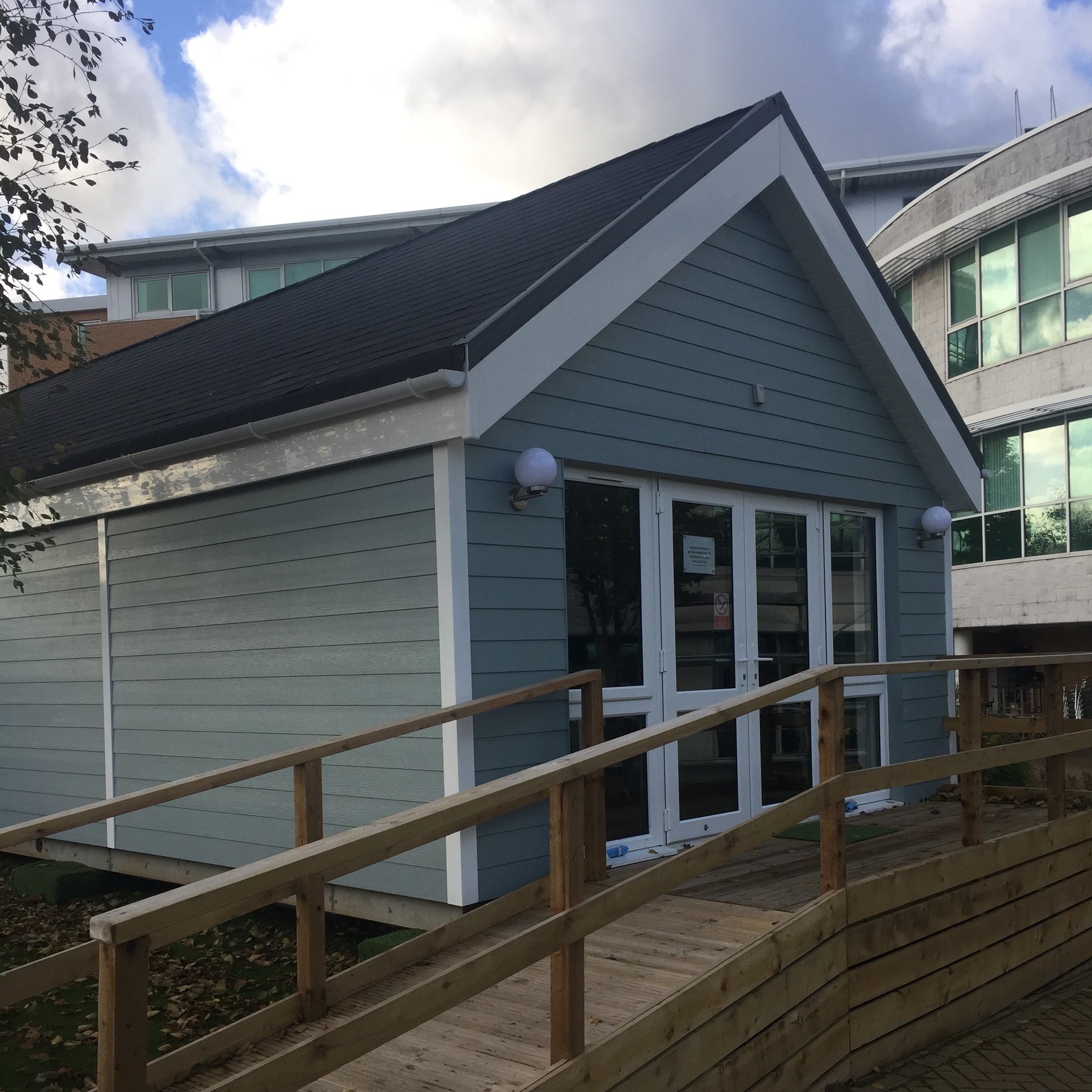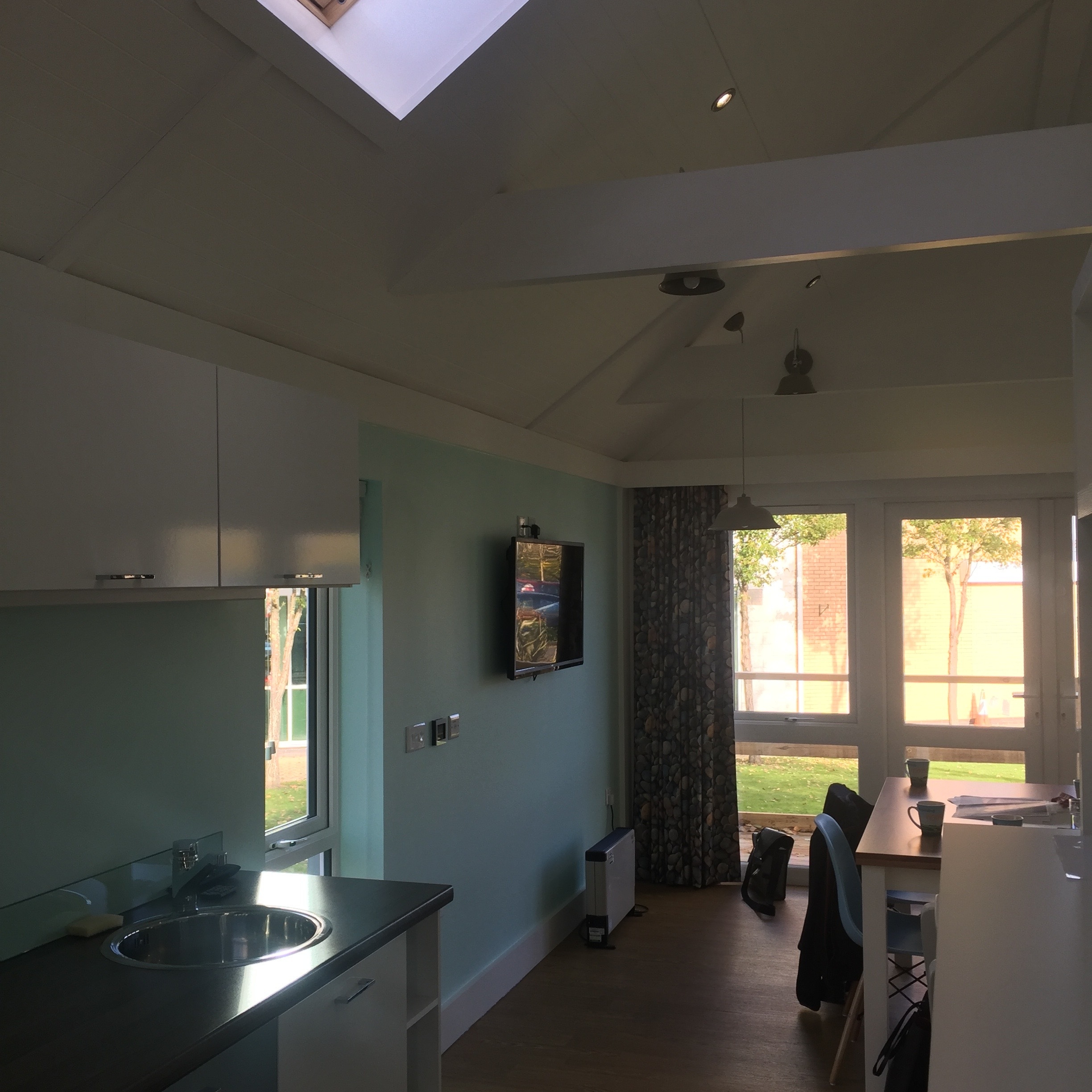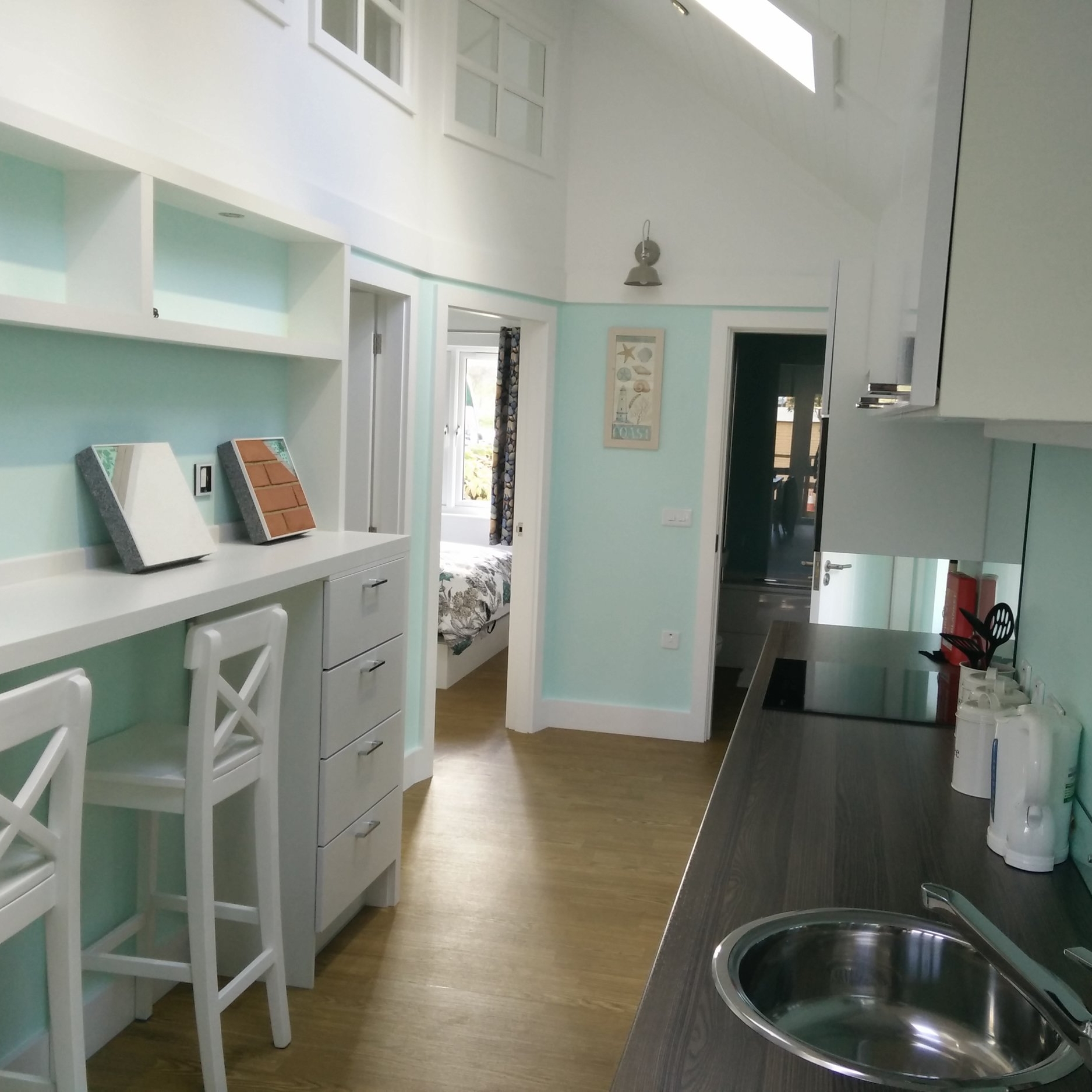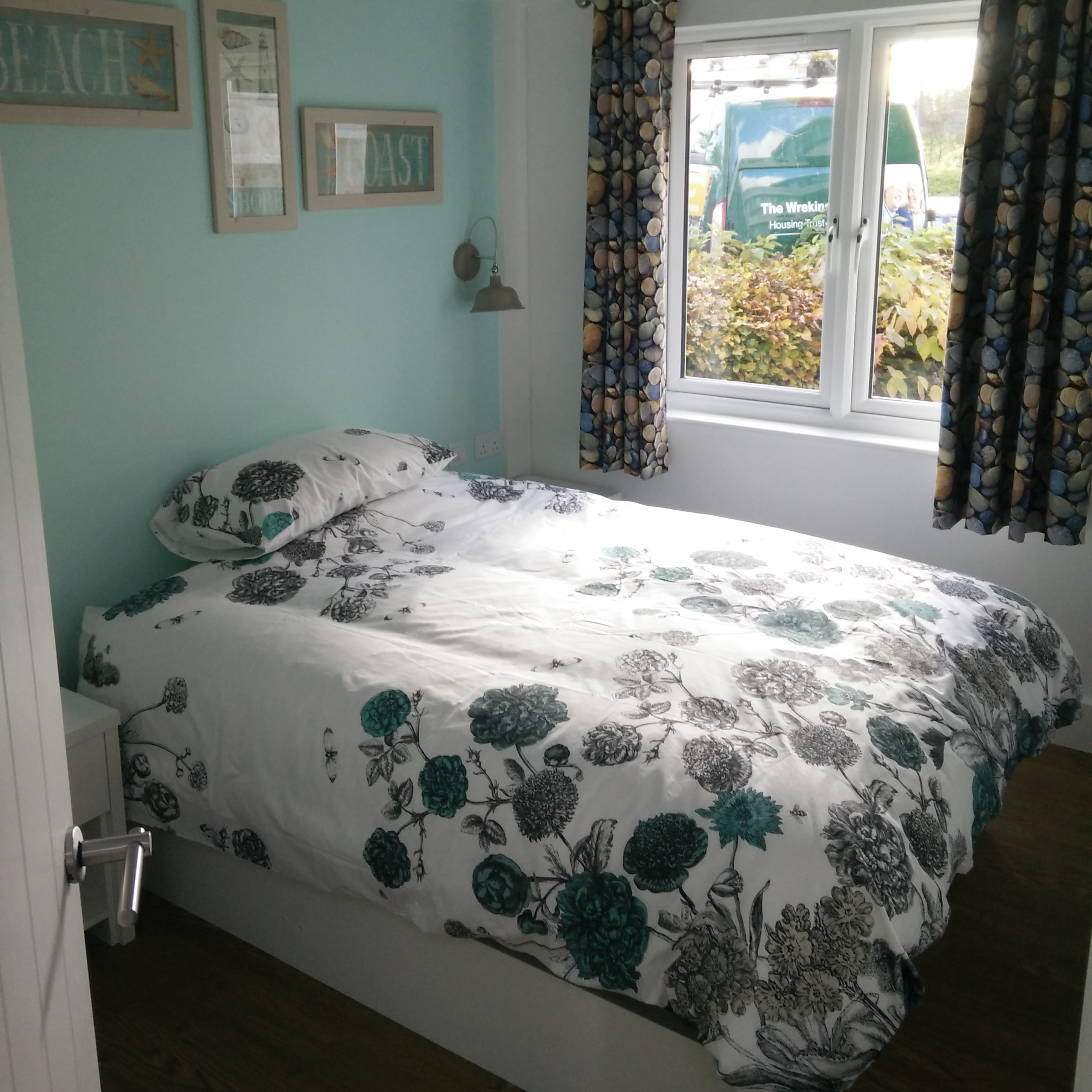Modular homes have the potential to reduce construction costs, lack of speed and other inefficiencies that are associated with a traditional build. Yesterday we had the pleasure of visiting a neighbouring housing association to discover more about their prefab bungalow. Wrekin Housing Trust, represented by Andrea Martin and Jean Teichmann, have been trialing the idea outside their office.
We were keen to discover the benefits and potential downfalls of this construction method first hand and, walking into the airy blue living room, we were pleasantly surprised. This particular model, styled after a chic beach house, took only half a day to be planted on site - with all of the utilities (including wifi!) basically just plugged in. Only minimal preparatory groundworks are required, significantly less than needed for a brick build.
The two bed bungalow cost £60,000 (including all the furniture), with no compromise on quality, light, space or energy efficiency.
The modular construction takes a fraction of the time and workforce to construct and generates less waste as it's assembled to order in a factory, and offers limited opportunity to make on the fly alterations. This particular model arrived in one piece - but a larger build can be split into 3 parts; a base, the sides and the roof.
It is basically like giant flat pack furniture.
The majority of the time on the installation morning was connecting the utilities and arranging the furniture. It can come with different surface skins, fixtures inside and, if it were a permanent feature on Wrekin's car park, it would have solid foundations rather than being propped up on blocks. You can probably tell we were impressed.
Challenges that face this construction method
This prefab has been designed by the pioneers of tiny, quick assembled homes; park home and caravan designers. Back before George Clarke made tiny homes cool, the caravanning industry were paving the way to utilise space and comfort away from bricks and mortar.
Our hosts spoke about the need to change misconceptions about park homes. They have a stigma attached, but when they look like this you it doesn't feel any different to a bungalow (minus the temporary wooden access ramp of course). However, being able to walk around it meant any preconceptions soon disappeared. Inside was spacious, light, functional and well proportioned. A perfectly practical home, regardless of its origins.
Bungalows are popular and are difficult to get your hands on, but often not the first thought to those that are house hunting. They have a market and one that is potentially growing. Those under 35 are being pushed to find cheaper accommodation or risk a shortfall in rent due to the welfare changes. Many older people appreciate the manageability of a smaller property and the extension of independence a bungalow can bring.
Additionally - many of us now desire a more minimal lifestyle, trading space for affordability.
Safe to say, it's a giant leap from the miserable October half term spent in a Skegness caravan in 1983! We're excited to see more of modular, very soon.




